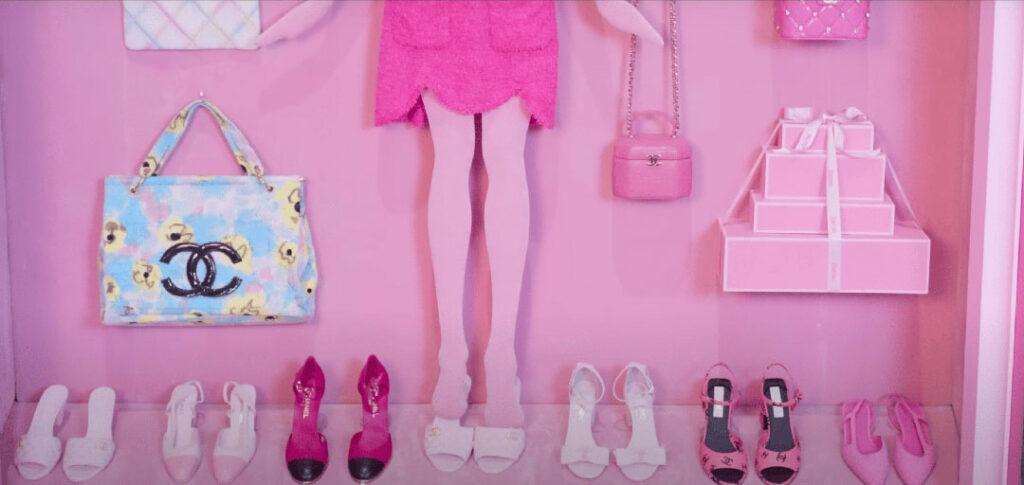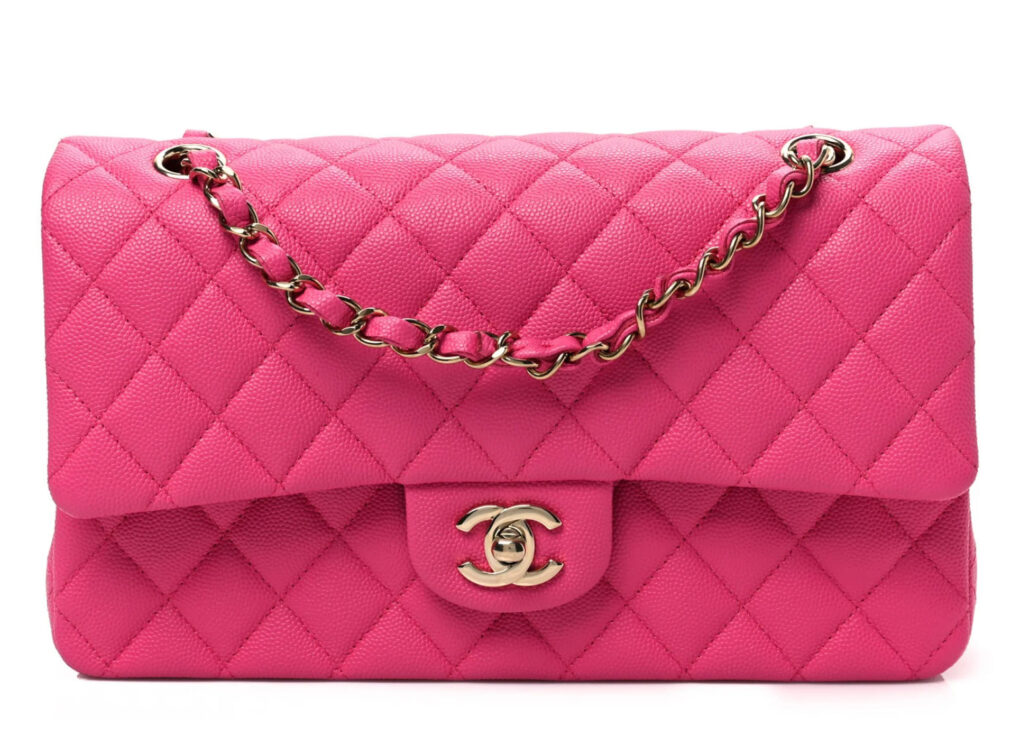The Alluring Glitz of the Luxury Industrial Complex.
In the labyrinth of the film industry, an intriguing new synergy has emerged – a vivid intersection of cinema and fashion, where the audience is entranced by the plot and lured into an all-consuming world of glamor and luxury.
No better example of this can be found than in the recent Barbie film directed by Greta Gerwig. The movie surreptitiously morphs into an elaborate, glorified commercial for the luxury brand CHANEL, ensnaring its audience in the throes of the Luxury Industrial Complex.

The Barbie film transcends these parameters, ingeniously morphing into a grand advertisement for CHANEL.
Fashion has always played a pivotal role in cinema, enhancing narratives, conveying character nuances, and contributing to visual aesthetics. However, the Barbie film transcends these parameters, ingeniously morphing into a grand advertisement for CHANEL. The viewers are artfully guided through Barbie’s extensive CHANEL wardrobe, the bags acting as a glittering, captivating protagonist of their own.
The CHANEL brand subtly and yet overtly infiltrates Barbie’s world, constructing a narrative where the luxury label is integral to Barbie’s identity.
But let’s take a moment to untangle the layers. Margot Robbie, an accomplished actress, and a well-known CHANEL ambassador, portrays Barbie, an iconic doll that epitomizes Western consumer culture. It’s an ingenious example of brand partnership. The CHANEL brand subtly and yet overtly infiltrates Barbie’s world, constructing a narrative where the luxury label is integral to Barbie’s identity.

We find ourselves under the relentless influence of a luxury label deeply embedded into the childhood icon’s universe, becoming an inherent part of her identity.
CHANEL’s omnipresence in Barbie’s world extends beyond a wardrobe narrative, reaching an astonishing level of product placement. The nostalgic trip through CHANEL’s timeless bags, from the 1990s vintage bags to Karl Lagerfeld’s designs, is mesmerizing yet jarring. We find ourselves under the relentless influence of a luxury label deeply embedded into the childhood icon’s universe, becoming an inherent part of her identity. The film subtly steers viewers towards the idea that Barbie, a doll revered by millions of children, cannot do without her CHANEL bags. Is this what we want to convey to our children and teenagers, the movie’s primary target audience?
While Margot Robbie shines on screen as Barbie, the film blurs the line between cinema and branding, constructing an aspirational world where luxury brands are essential to one’s identity.
The movie is unapologetically a celluloid advertisement for CHANEL’s luxurious line of handbags, intricately woven into the Barbie narrative. While Margot Robbie shines on screen as Barbie, the film blurs the line between cinema and branding, constructing an aspirational world where luxury brands are essential to one’s identity.
View it critically as a glaring example of how the Luxury Industrial Complex can subtly yet dramatically influence our perceptions and aspirations.
Undoubtedly, this strategy reflects a new reality of branding, as more luxury brands use narrative arcs in popular culture to infiltrate our consciousness. But it also serves as a potent reminder that consumers should be aware of this coalescence between entertainment and consumerism. Let’s celebrate the film for its aesthetic brilliance and powerful narrative and view it critically as a glaring example of how the Luxury Industrial Complex can subtly yet dramatically influence our perceptions and aspirations.

